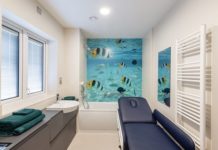The healthcare industry faces unique financial challenges ranging from ever-increasing operation costs to evolving insurance policies. To maintain profitability and provide quality patient care, healthcare providers must employ strategic revenue-enhancing techniques. Here are five ways to increase revenues and maximize profit margins in healthcare.
Implement Short-Term Investments for Long-Term Gains
Healthcare providers should make short-term investments to ensure instant cash flows while laying a foundation for the extended future by maximizing their earnings. Examples of short term investments include medical equipment investments, electronic health records (EHR) integration, and digital marketing investments. Such investments can shorten the processes involved, leading to the easier closure of patient acquisitions.
For instance, investing in automated appointment scheduling would develop a sustainable workload solution removed from patient bookings. Upgrading diagnostic equipment would bring further clarity and efficiency, resulting in more fulfilling patient outcomes and more money.
Optimize Billing and Coding Practices
Billing problems and mistakes in coding can lead to revenue losses and delays in reimbursements. To ensure accurate billing and payments, healthcare facilities should invest in automated billing programs and ongoing training for staff in submitting claims and processing payments.
Consider using AI medical billing software derivatively to lessen the rate of errors and work through the revenue cycle. Outsourcing medical billing and collecting funds through third-party agencies reduces the amount of administrative work and is more efficient.
Based on the regularity of claim denials, nowhere else would a claim denial rank higher in loss of revenue. Some steps can be taken to ensure proper documentation, which can lessen the number of claims submitted for approval and pending rejection. The training of staff involved in the handling of appeals has also increased reimbursement rates.
Patient Engagement and Retention
Loyalty towards the service provider is one of the bases for continuity in revenue growth. Different avenues engaging patients, such as personal connections, loyalty programs, and preventive health campaigns, create a long-term relationship.
The application of the patient portal system and automatic emails or telephone calls to remind patients of their appointments lead to decreased missed visits and increased return visits, thus increasing revenue.
Healthcare organizations could create a system of feedback-for-change by instilling a culture of open communication with observance toward the satisfaction levels of their clientele. Offering dialogue webinars and health awareness programs would reduce malalignment within the organization, eroding patient trust and further reducing patient follow-ups with the hospital.
Alternative Paths of Income
Income diversification will help healthcare organizations stay strong during economically intervened times. New accelerations with practically every alternative introduce a disruption paradigm in existing healthcare delivery models across the spectrum. Other paths include alternative setups like in-house pharmacies, wellness program initiation, and development into specialty treatments.
Medical tourism may be approached by allowing specialized treatments for folks overseas through partnerships with travel agencies and hotels; in this way, they can offer package dealings that attract overseas customers and thus widen the opportunity for increasing revenue streams.
Improve Operational Efficiency and Cost Management
In pursuing revenue maximization, the need to identify and cut waste costs while maintaining quality is never-ending in any healthcare sector. It may be accomplished by analyzing workflow inefficiencies, streamlining administrative burdens, and renegotiating supplier contracts. An investment in lean management techniques and automation tools is another measure that can enhance operational performance, thereby reducing wretchedness.
Operational cost cuts may also be achieved through improvements in energy efficiency, such as LED lighting and intelligent temperature control. A centralized procurement system will also ensure efficient inventory management and reduce the waste of medical supplies.
Endnote
Profitable healthcare, while enhancing patient care, can be achieved through better billing, telemedicine, patient engagement, operational efficiency with data analytics, and staff productivity. Diversification into medical tourism, sustainability of energy, and the effort to engage more patients strengthen the cash flows. These approaches will put the health industry at the pole position for sustainable growth and success.















